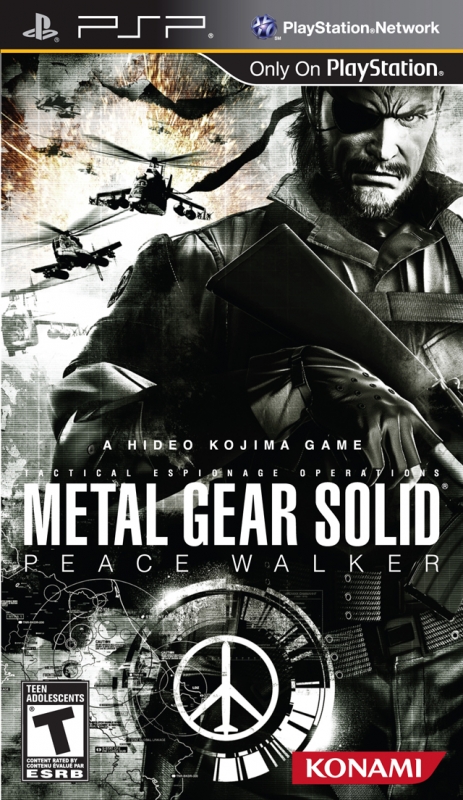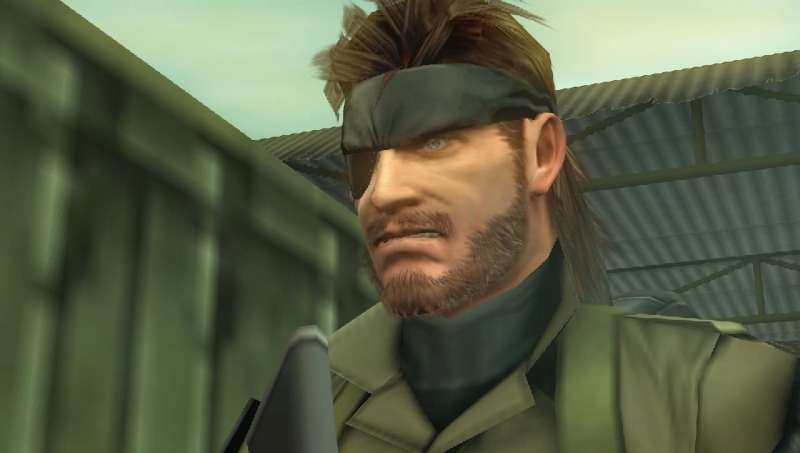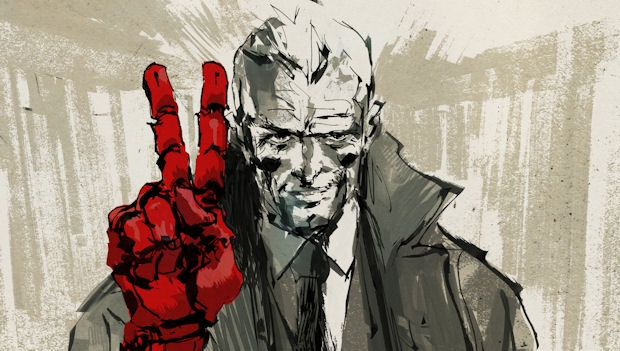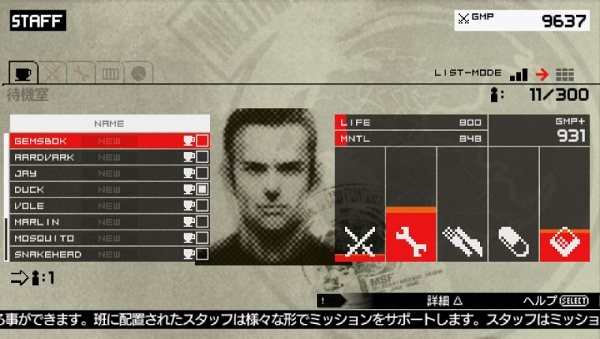Existing User Log In
New User Registration
Register for a free account to gain full access to the VGChartz Network and join our thriving community.





America - Front


America - Back

Metal Gear Solid: Peace Walker puts us yet again into the shoes of Naked Snake during the Cold War. The original Boss is dead by his hands and he now heads up Militaires sans Frontieres, the Military without Borders. They are a small band of ex-military ex-patriots; a Cold War precursor of Blackwater. They are well-trained and underfunded – that is – until their next job comes in.

A professor and a young woman come to Militaires sans Frontieres claiming militaristic forces are moving into Costa Rica, a country without its own military. Since they cannot raise their own arms to defend against this threat, they are hiring your band of merry men to do it for them. As any Metal Gear Solid game would have it, appearances are not what they seem.
Peace Walker treads a line between standard Metal Gear Solid gameplay and a collection-driven, menu-based army building game. Missions look very much the part of a Metal Gear game. Lush jungles, ancient ruins, and secret military bases set the scene for the objective-oriented mission. This game looks good and sounds great for the PSP.

Environments are small between loading screens, obviously showing Kojima’s team was really pushing what the PSP could load at any given time. This means many missions are divided into several small sections on the map with medium-length loading times between each. Areas become increasingly complex as the game progresses, becoming multi-leveled zones with enemies able to spot you from above and below.
All this sounds like the standard Metal Gear Solid portable load-out and then I noticed something was missing. The first boss battle was an armored personnel carrier. The second was a tank, then a helicopter, then a crazy AI-piloted tank-like thing. Gone are the classic kooky Metal Gear Solid bosses like Psycho Mantis or the cyborg Gray Fox. While the AI bosses create some complicated and challenging battles, they don’t have the character or trademark absurdity that typifies the franchise.
Some of my favorite parts of the game were the cutscenes. Being a Metal Gear Solid game, these were numerous and long. They’re done in a great-looking motion comic style. What really stuck out for me was the unexpected interactivity. Sometimes that interactivity is subtle. You can at any time zoom in/out and pan around the cutscene, occasionally this is hinted by the game to help you catch things you would not otherwise. Then sometimes the interactivity is more abrupt, turning into quick-time events against enemies. This really caught me off guard the first time because it is integrated so flawlessly into the scenes; I kept failing a QTE without realizing it. Fortunately, they anticipate this and don’t penalize you that first time.

Gameplay during the missions is just like what was experienced in Portable Ops. Stealth is the highest priority for most missions. The game offers several different control options for the discerning player, but I found comfort with the standard PSP FPS setup, which is default for the game. Patience, silence, and a tranquilizer gun are your best friends, though CQC (close quarters combat) is a key skill too. Enemies are best dealt with swiftly and silently, or not at all. Each mission is then graded at the end based on how quickly you finished, then hurt by the number of kills you rack up or the number of alert phases you set off. Later missions crank the difficulty up on you, encouraging you to go at them in co-op, but they are very doable all by your lonesome.
All these premises hold true until you find yourself in a boss battle. Each time you are about to fight a boss, the current mission ends with a “…to be continued.” While stealth CAN be used (I say CAN if you’re some level of awesome I don’t comprehend) to take down some early bosses, generally you just want to bring the biggest, baddest, most explosion-prone weapons you have into these battles. Cardboard boxes and silencers won’t do you any good when a tank is coming after you. I thought this was a nice break from the stealth, however, and gave it aMonster Hunter-feel. Boss battles were a chance to show off how badass Snake can really be. The boss battles against AI opponents end with a minigame in which you rip out circuitboards based on the damage you did in the fight.

If boss battles are just a little different from the Metal Gear Solid you’re used to, what happens outside the missions will throw you for a loop. One new feature in missions is the ability to extract enemy soldiers or captive allies. These soldiers are then recruited to join your ever-growing private army at Outer Heaven. Different soldiers have different abilities and strengths. These recruits can then be assigned to R&D, Intel, Mess Hall, Medical, and Combat Teams. Effective teams allow you to develop new, better weapons. They also affect morale, soldier healing time, and further effectiveness in recruiting. Remember those circuit boards you were ripping out of AI opponents? You can use those to build your own Metal Gear.
The game also features Outer Ops, which are mini-missions you send captured mechs and members of your combat team to complete. You build a force you think is capable of destroying the enemy squad, go complete your own mission, and when you return results come back with their success or failure. These Outer Ops earn your soldiers valuable experience points as well as equipment and ammunition for Outer Heaven. Most missions you can win handily, but in later ops I found the need to send only my best soldiers and mechs for fear of losing them in an op. For those really tough Outer Ops, best to just send out that Metal Gear you just spent all that time developing.

If all that wasn’t enough, Metal Gear Solid: Peace Walker boasts arguably the best local multiplayer support ever seen on the PSP. First, you can recruit soldiers from wifi hotspots. You don’t even have to legitimately sign on to the hotspot, the game simply sees them and enables a small minigame where you have to perform CQC takedowns on a number of potential recruits within a time limit. Most story missions can be played with up to four players cooperatively and there are numerous maps unlockable for multiplayer versus play. Unfortunately, all multiplayer is done via Ad Hoc mode, so you need friends with PSPs and Peace Walker nearby. If you have such friends, you can also trade soldiers Pokémon style.
The value on Peace Walker is very high. My save game after beating the final boss was around 45 hours and there is still plenty of missions to get better ranks on, better soldiers to recruit, and plenty of hours multiplayer to enjoy. The best weapons don’t unlock until you get all your teams up to level 99 and the only way to do that is to recruit better and better soldiers or trade for them. Finally, a PSP game that sucks away my time more effectively than Puzzle Quest. That is quite an achievement.

Metal Gear Solid: Peace Walker isn’t just one of the best games the PSP has ever had, it’s also one of the most enjoyable gaming experiences I’ve had in the 25 years I’ve been a gamer. It’s like somebody took Metal Gear Solid – a franchise I enjoy – and infused it with a highly addictive drug, then blended in a little Pokémon and Monster Hunter, and finally a dash of classic XCOM for good measure. That is a rare and spectacular recipe.










| Total Sales |
0.96m
Japan |
0.46m
NA |
0.42m
Europe |
0.25m
Others |
2.08m
Total |
| 1 | 445,138 | n/a | n/a | 445,138 | |
| 2 | 138,434 | n/a | n/a | 138,434 | |
| 3 | 57,033 | n/a | n/a | 57,033 | |
| 4 | 33,379 | n/a | n/a | 33,379 | |
| 5 | 24,586 | n/a | n/a | 24,586 | |
| 6 | 14,394 | n/a | n/a | 14,394 | |
| 7 | 10,243 | 98,067 | n/a | 17,306 | 125,616 |
| 8 | 7,408 | 22,762 | 30,884 | 19,927 | 80,981 |
| 9 | 6,073 | 10,482 | 20,909 | 12,621 | 50,085 |
| 10 | 4,883 | 7,105 | 11,103 | 6,974 | 30,065 |
|
|
|
|
|
|
|
|
|
|
|
|
|
|
|
|
|
Mr Puggsly
posted 18/12/2011, 06:55
Glad they brought it to the HD twins because it much more enjoyable on a gamepad. Message | Report |